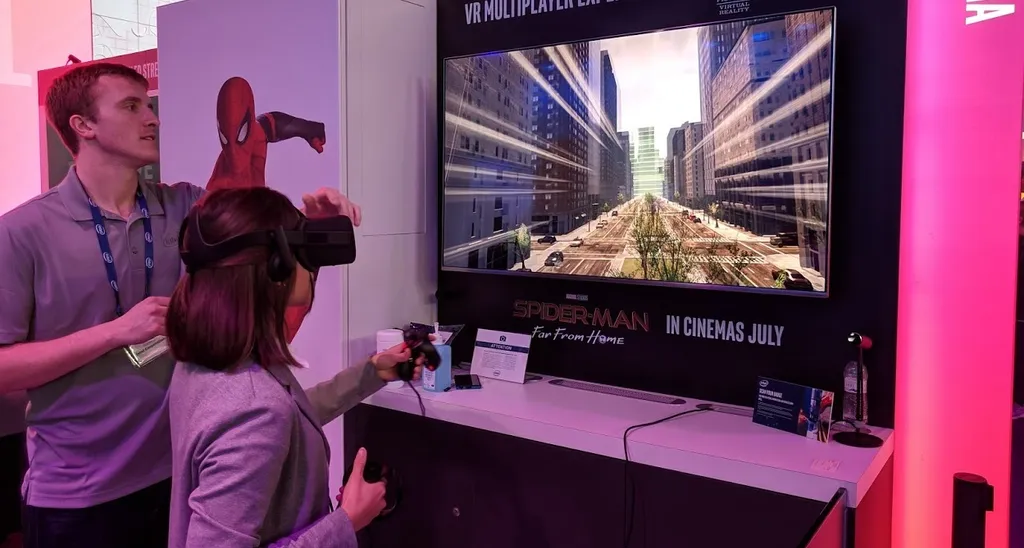I finally did it. I stood on the edge of a building and looked at New York stretching out in front of me. And then I jumped. I flicked a Touch controller forward, aimed at the building on my left and shot a webline. It snagged to the side and I yanked myself toward it. It felt great.
As something of a Spidey-obsessive, this was a big moment for me. Pardon the pun, but web-swinging has been a sticking point for Spider-Man in VR. I was frustrated by the wall-crawler’s lackluster controls in Marvel Powers United VR and thought Spider-Man: Homecoming’s VR app was entirely underwhelming. But Sony Pictures’ VR division and developer CreateVR (returning after Homecoming) are finally giving us what we want here. This MWC 2019 demo offered a simple street race. While brief, it finally proved that Spider-Man can do whatever a spider can in VR.
Check out some gameplay below. Fair warning, though, lots of people trawling the MWC show floor aren’t that experienced with VR. This was the best I could get.
Web-swinging here straddles a delicate balance. There’s authenticity (as ‘authentic’ as embodying a human spider can be, anyway) afforded by some clever constraints in freedom. You won’t ‘swing’ so much as zip – after attaching a webline to a building you yank yourself toward it. You’ll then glide toward that location at a breezy pace until you decide to fire off a new web and change course. While it doesn’t match the elegant CG spectacle of the big screen and games, you get swept up in the rhythm of web-swinging just enough not to really notice. CreateVR nailed the most important aspect of web-swinging: the flow.
Far From Home feels finely tuned in this respect. It’s designed not to overwhelm just as much as it is to empower (this would be the perfect time to make a power/responsibility joke). Web-swinging keeps you in the driver’s seat; whenever I shot a line I had plenty of time to consider my next move. Think Windlands but with more measured pacing.
The trick, it appears, is to keep things simple. You won’t, for example, be swinging around corners. The course is a straight line with the occasional skyscraper to either go around or ascend. Swinging is so refined I found it tough to care, though. There’s variety to building size and shape and agency in approach that still keeps you on your toes. At one point I was charging across rooftops making massive leaps across chasms. In another, I vaulted myself through a gap between two buildings. Swing into a wall, meanwhile, and you’ll run toward the top of the building, much like you would in last year’s Spider-Man PS4 game. I could have just swung through the entire course but the app gives you the power to decide how to leap every hurdle. That’s key.
There was strict FOV filter, though Sony Pictures Senior Vice President Jake Zim told me you’d be able to remove this in the final experience. In fact there’s still some fine-tuning going on. I ran into a few awkward spots where I hit the edge of a building and came to an abrupt stop, then struggled to gain momentum again. Hopefully the developer irons out these issues.
I have to commend Sony Pictures and CreateVR for taking another swing (sorry) at Spidey. The pair clearly listened to the criticism of Homecoming VR. It would have been all too easy to build another quick tie-in experience, but instead they committed to making something genuinely improved. I didn’t just feel like a superhero, I felt like the one superhero everyone dreams of becoming.
Zim also said to expect a piece that’s bigger than Homecoming, though not a full game in its own right. Perhaps something that takes an hour to see through, then. But, considering how much fun Far From Home is at first swing, I’ll be spending much more time with it than that.






























